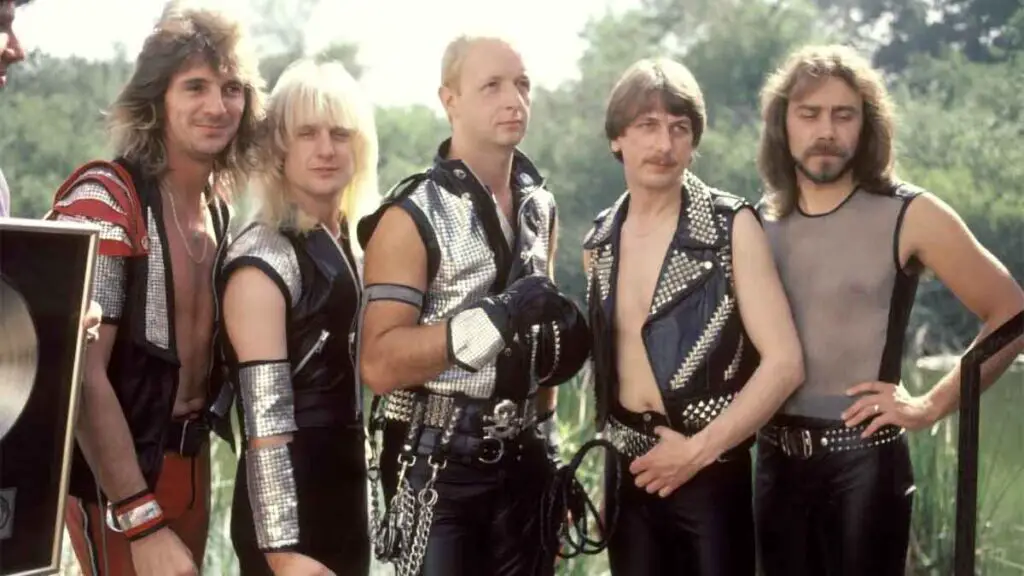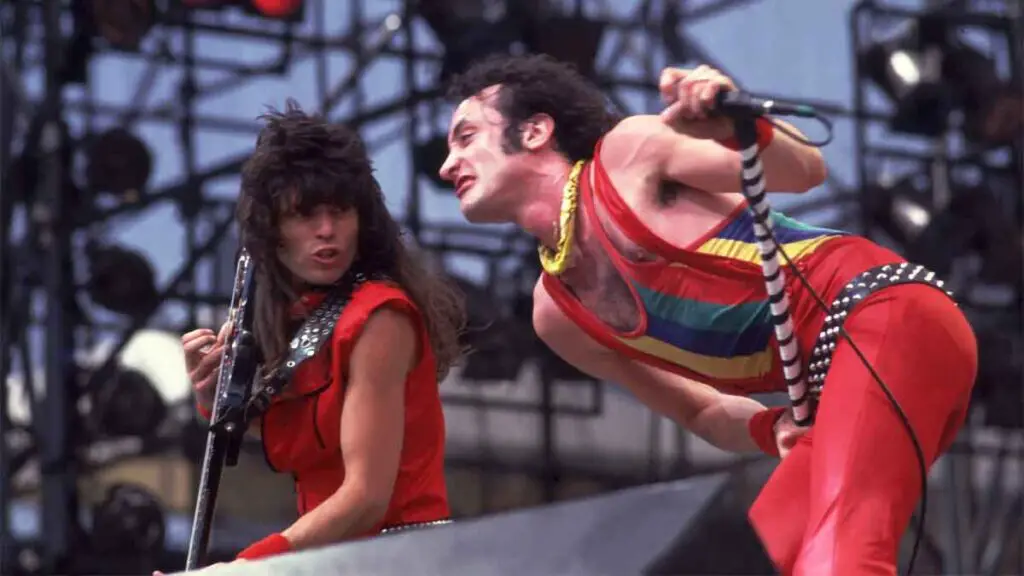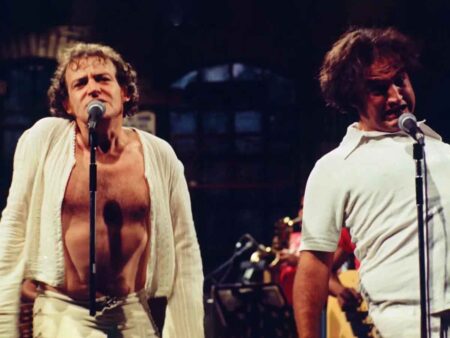Contents
Did you know that one of the biggest music festivals of the ’80s was bankrolled by an Apple co-founder?
That’s right—long before tech moguls started throwing billion-dollar events, Steve Wozniak, the genius behind Apple’s early success, decided to throw the ultimate party.
The US Festival (it’s pronounced ‘us,’ as in you and me, not U.S.), held in 1982 and 1983 near San Bernardino, California, wasn’t just a massive concert—it was a bold experiment that fused music, cutting-edge technology, and a healthy dose of ’80s optimism.
The Vision: A Music Festival for the Future
Wozniak’s ambition extended far beyond typical concert experiences. The festival pioneered numerous technological firsts, as Wozniak himself explained in the US Festival – 37th Anniversary Interview w/ Steve Wozniak, Richard Blade & Terri Nunn:
“We were the first concert in the United States to use the big Diamond Vision, you know, a video screen at a concert. The first one to have speakers halfway into the audience to keep the sound balanced for a larger crowd than ever before. We had a lot of firsts.”
Partnering with legendary concert promoter Bill Graham, Wozniak created a high-tech oasis in the California desert. The festival grounds at Glen Helen Regional Park featured massive video screens, technology exhibits, and unprecedented attention to attendee comfort.

The Lineup: A Who’s Who of ’80s Rock
The 1982 festival drew approximately 200,000 fans over Labor Day weekend with acts including Fleetwood Mac, The Police, Tom Petty, and Talking Heads.
The 1983 festival expanded with dedicated theme days:
- New Wave Day: The Clash, INXS, A Flock of Seagulls
- Heavy Metal Day: Van Halen, Mötley Crüe, Judas Priest, Scorpions
- Rock Day: David Bowie, U2, Stevie Nicks
Booking top-tier talent wasn’t easy—or cheap. “I was very instrumental in getting Bowie there,” Wozniak recalled. “We needed a top headliner, and Bowie was the best. But he was over in Europe. It set the salary level high, so all the other headliners wanted to be at that level, which cost us a lot.”
The Clash Controversy
One of the festival’s most dramatic moments involved The Clash and a planned Soviet broadcast. Richard Blade, who was there, explained in the US Festival – 37th Anniversary Interview:
“Steve had set up the first live satellite transmission with the Soviet Union. The headliners for night number one, The Clash, were going to be transmitted live to the Soviet Union. But at the last minute, the Politburo suddenly realized who The Clash were, and because they were a political band, the Russians said, ‘We can’t have our people exposed to them.'”
This led to a last-minute change: “Steve came to me and said, ‘We can’t have The Clash go on because the Russians won’t have it.’ So it was Men at Work instead.”
The band didn’t take this well. “The Clash were absolutely furious. They projected their paycheck up on the Jumbotrons as kind of a slap in the face,” Blade recalled. “At the end of the performance, Mick Jones was so upset that he walked away from the band, and it was his last ever show with The Clash.”
U2’s Breakout Moment
For a young U2, the US Festival represented a crucial stepping stone toward superstardom. Richard Blade recalled seeing Bono’s signature stage-climbing before he was famous:
“I saw U2 when they opened for Missing Persons. I remember Bono climbed the speakers at the side of the stage, and he was pulled down by the security guards because at the time, he wasn’t ‘Bono’ yet. He was just this Irish singer in a small band. They told him to get down. Who do you think you are?”
The US Festival helped cement what would become Bono’s trademark move. “And then afterwards, that moment became part of U2’s history—Bono climbing speakers, scaffolding, waving his rebel flag,” Blade said.
Bono was interviewed later and said: “You’ve got to seize the moment. I think we seized the moment. I think it’s the moment everybody’s going to remember. I won’t forget.”
For Berlin artist Terri Nunn, performing on the same day as U2 and Bowie was unforgettable. As she shared in the US Festival – 37th Anniversary Interview:
“That was the best day of my life. It was everything I’d ever dreamed of. The biggest audience live we had ever played to before or since. And those bands—David Bowie, Stevie Nicks, Joe Walsh, U2, The Pretenders—are you kidding me? All in one day!”
The Financial Reality
Despite its innovations, the US Festival was a financial disaster. Wozniak is transparent about the losses: “I lost over 10 million on each of the two US Festivals.”
Adjusted for inflation, that’s roughly $35 million in today’s money—a staggering loss for an event that aimed to bring people together through music and technology.
Creating the festival required building everything from the ground up. “There was no formula for these three-day festivals, nothing. There had been a Woodstock which was sort of accidental,” said Wozniak.
His attention to detail was legendary. “Whatever the number of bathrooms you’d have to the size event, double it… I just didn’t want people to come and be inconvenient in any way by some statistic.”
But money was never Wozniak’s primary motivation. Asked about whether he’d consider doing a 40th anniversary concert, Wozniak replied: “I never sought money, even with Apple, and computer designs were never my idea. I gave my money away to all good things, and I do not have the funds to fund another US Festival.”

The Legacy of the US Festival
Though short-lived, the US Festival planted seeds for future music events. Its multi-genre approach, technological integration, and focus on fan experience influenced festivals like Coachella and Lollapalooza.
Unfortunately, much of the festival remains undocumented in official releases. “We’ve actually had attempts to put together a full US Festival film, but the trouble is negotiating the rights with all the bands. It’s very hard,” Wozniak explained.
The US Festival may have been financially unsuccessful, but its vision of uniting technology and music proved prescient—a blueprint for how festivals would evolve in the digital age.




